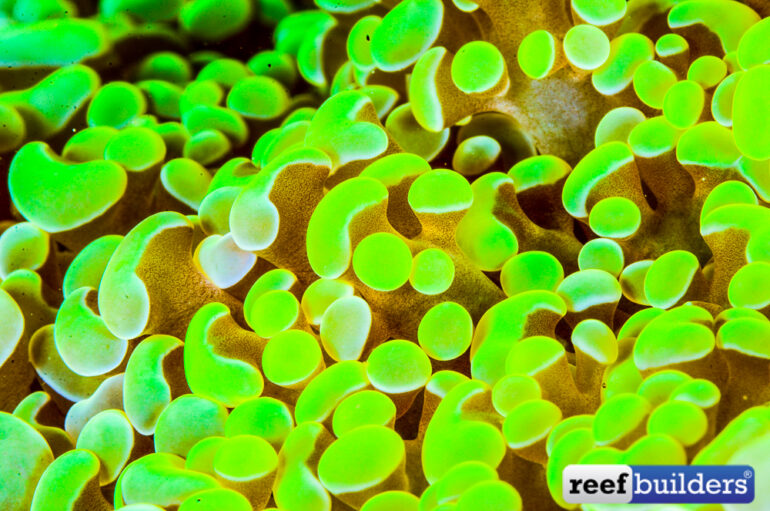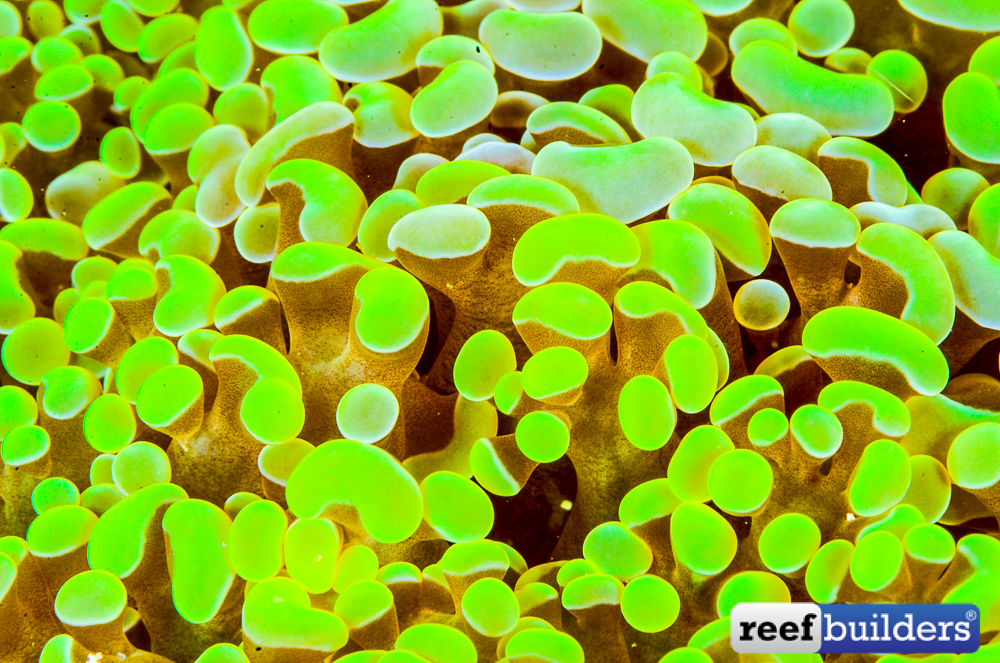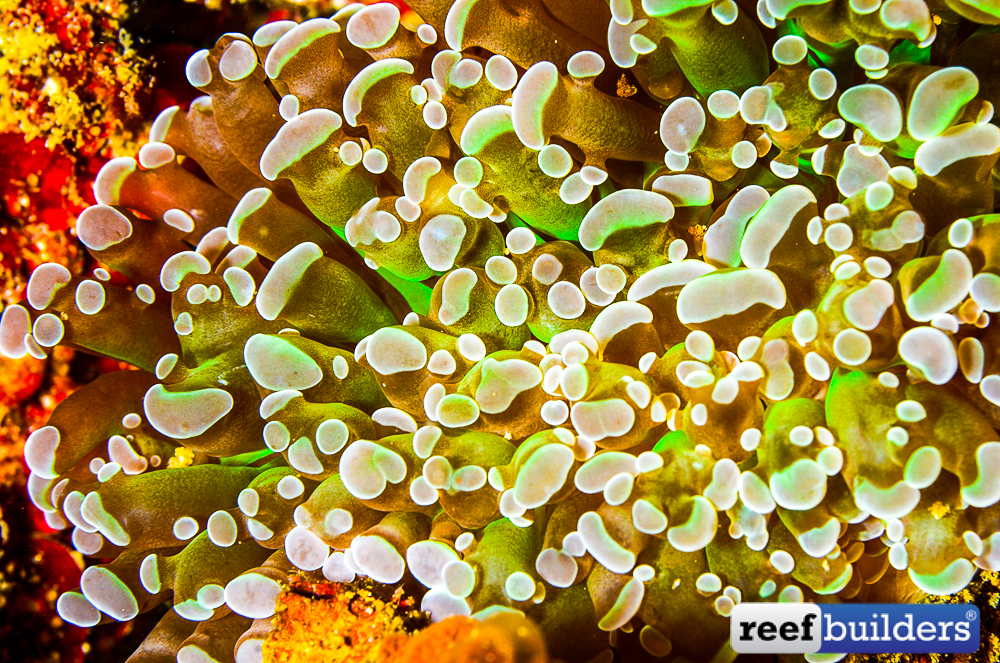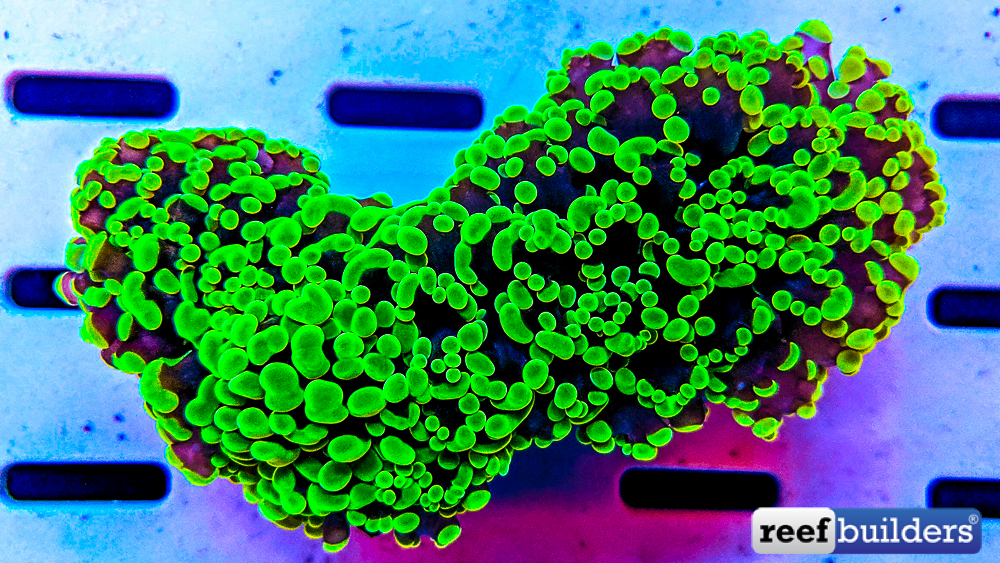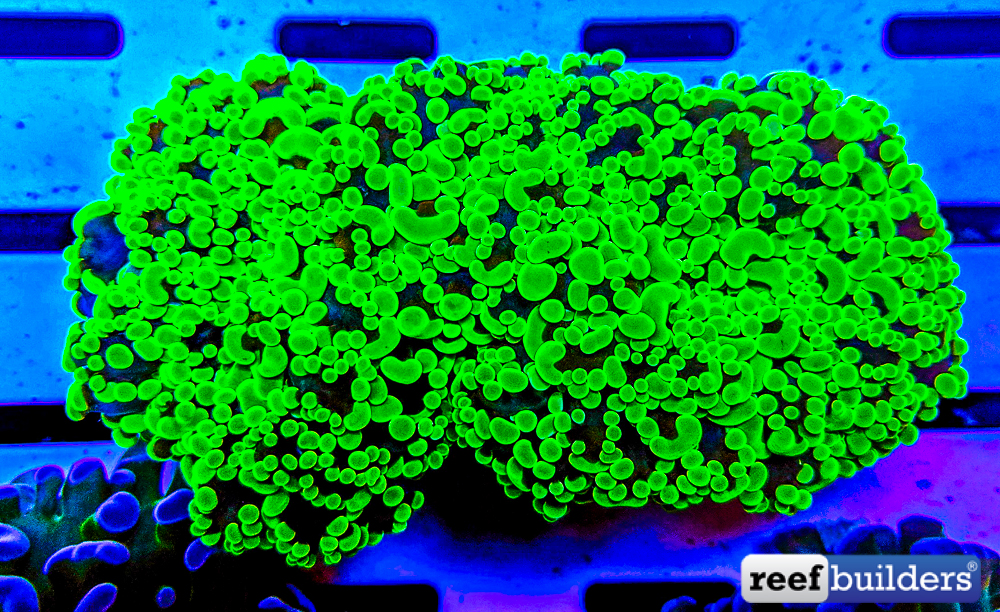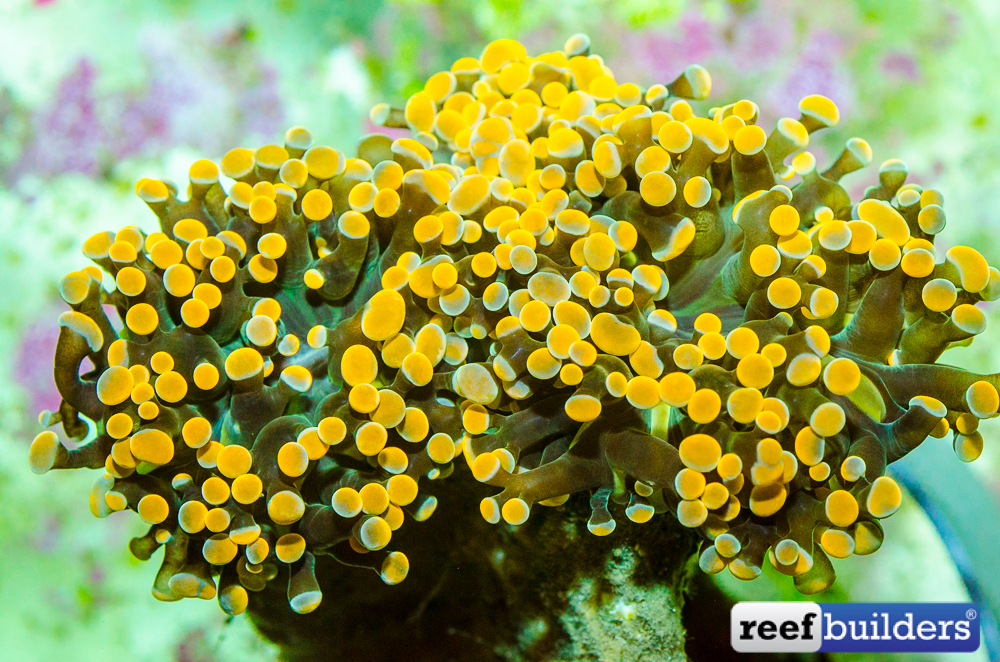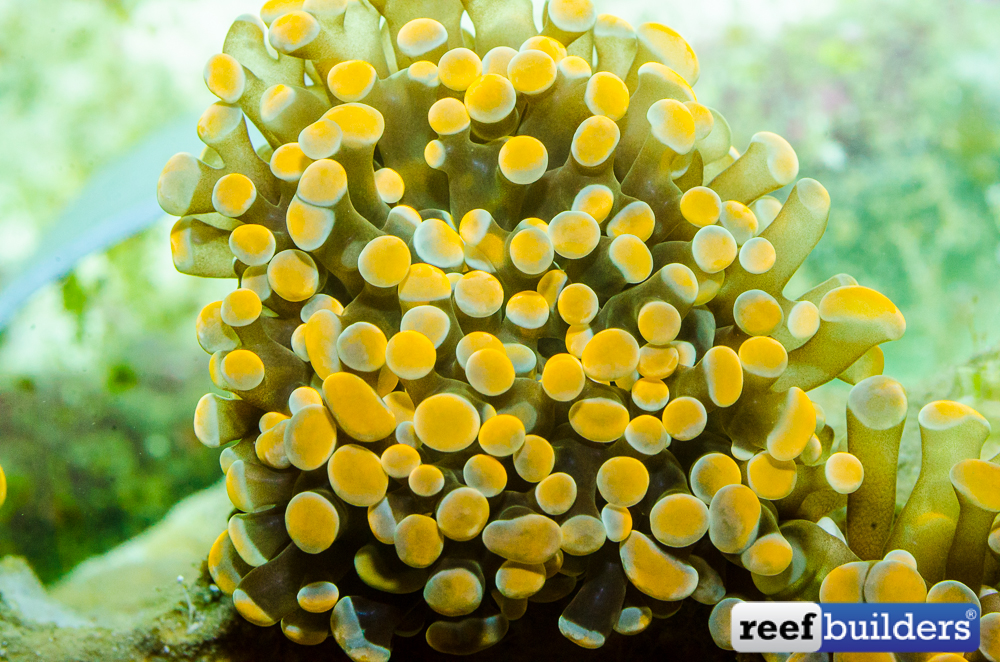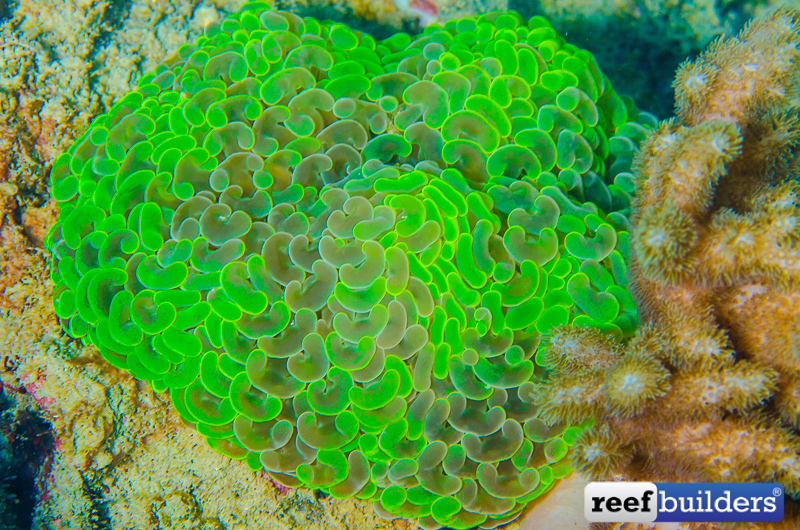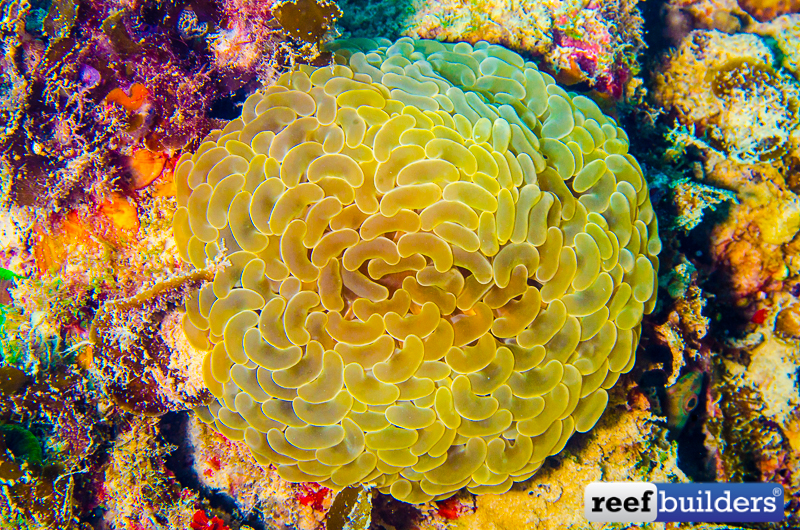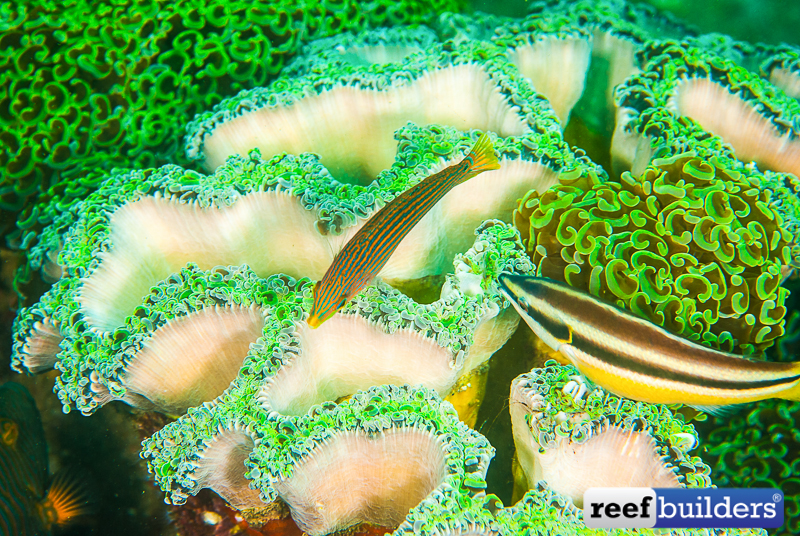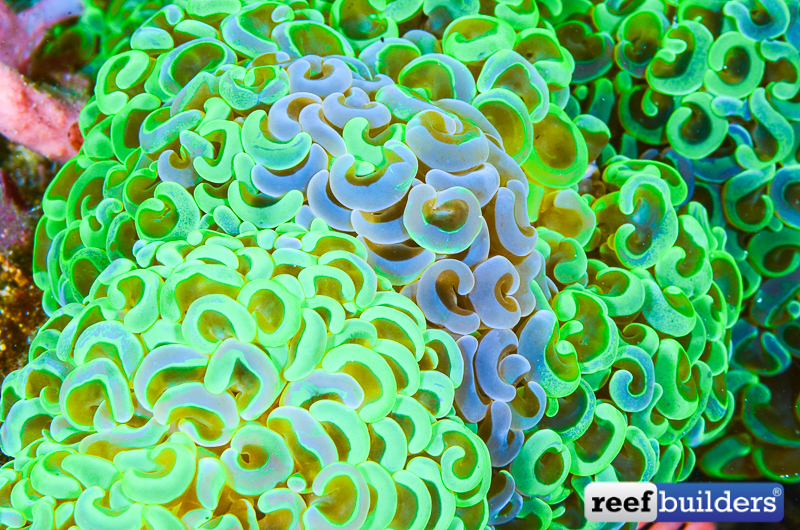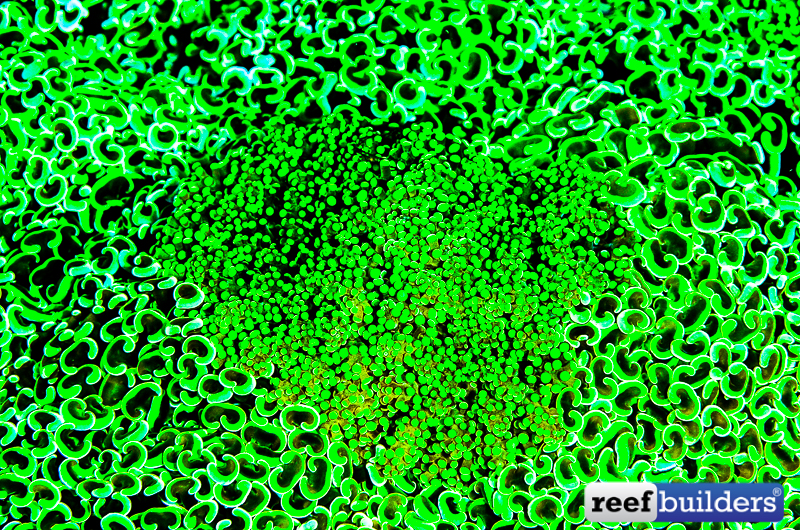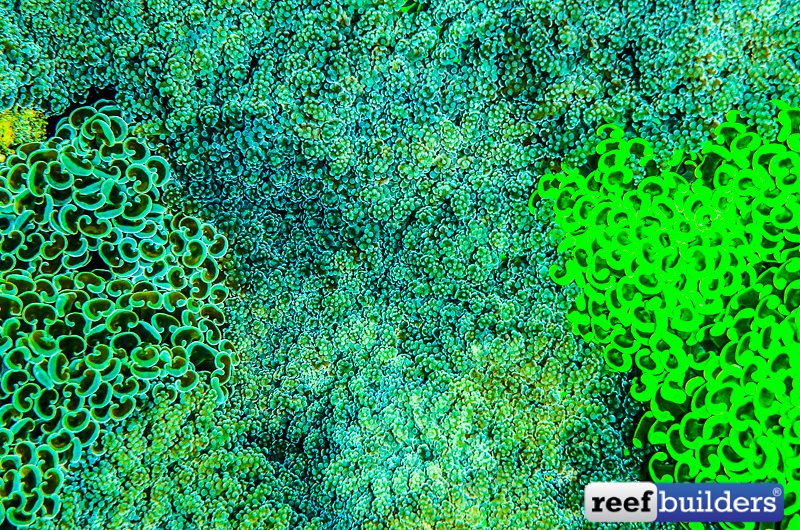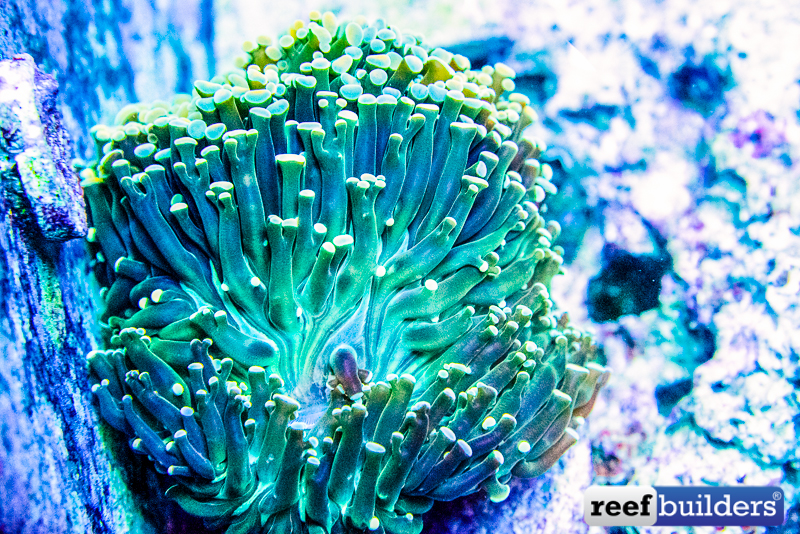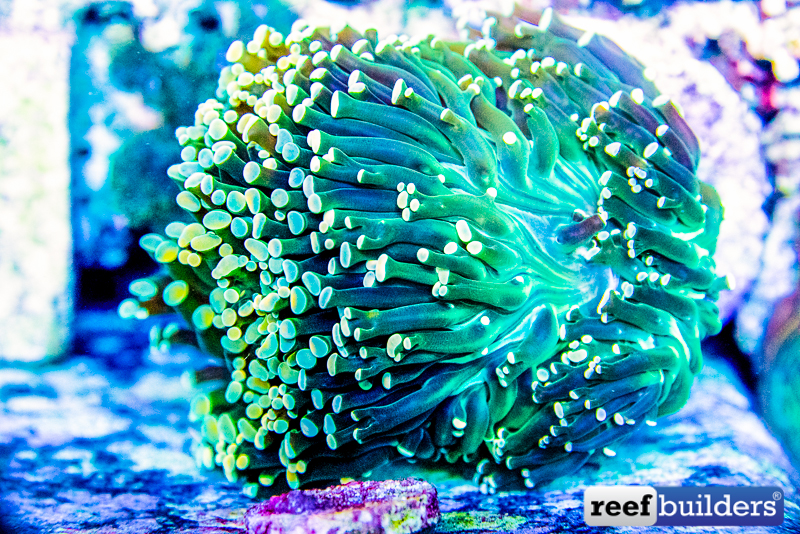What exactly is a Frammer coral? It’s a Fimbriaphyllia with a tentacles mix of Hammer and Frogspawn tips. Recently the Euphyllia group has been revised and the only Euphyllia is the Torch, Euphyllia glabrescens, and all other former members have been sent away to the new Fimbriaphyllia genus.
Over the years, in Indonesia or in Australia, we noticed Fimbriaphyllia with a mix of tentacle shape harboring both the classic frogspawn and the hammer type tentacles. Usually these corals are seen with a frogspawn base and few hammers style here and there.
As for the skeleton, we have seen few different scenarios, recently while we were with Ultra Coral Australia, we saw quite a few pieces, and over there, it’s mostly classic Frogspawn F. divisa skeleton, while in Indonesia it’s mainly branching frogspawn, F. paradivisa skeleton. This probably due to the species availability. frogspawn, F. divisa is more common in Australia than branching frogspawn, F. paradivisa. In Indonesia, both of them are common, but only branching frogspawn, F. paradivisa produce extensive large colony, with some of these colonies could be called a reef by themselves.
In Australia, we mostly find the thick wall hammer, that is probably a different species, and the classic wall hammer is rare.
Meanwhile in Indonesia, even if both are present, the thick hammer is rare, and only found in very specific area. While the classic thin wall hammer, is found all over.
Fimbriaphyllia ancora, F. divisa or F. paradivisa are often found together in the same kind of environment and even often living together thus confirming the very close relation ship these two have. It’s clear to see that the torch coral is different because if you placed one near either of these Hammer corals, one of them will get hurt, while frogspawn and hammers can live peacefully together.
We don’t know if these Frammers, are the result of cross fertilization, hybridization, added Cnidocyte stinging cells for fighting purpose, or just a tentacle malformation. But the fact that they are closely related, live together, cross fertilisation to a very small extent is a possible explanation. We have witnessed very extensive fields of F. ancora mixed with F. paradivisa in all possible colors in North Sulawesi, Indonesia.
One thing we know is that these frammers actually keep their dual shape tentacles over at least few years since we have one piece of the Indo one growing nicely in our studio, thanks to Chris Meckley from ACI in Florida.


